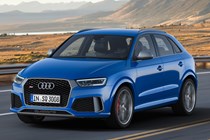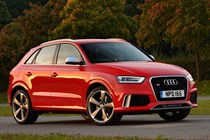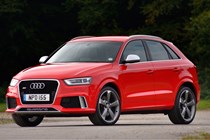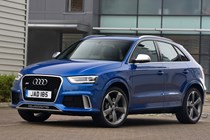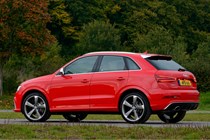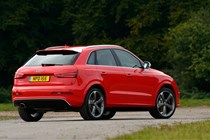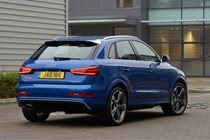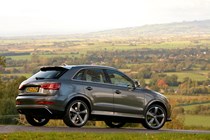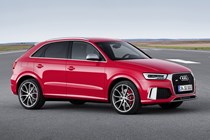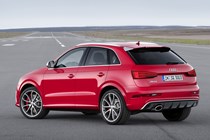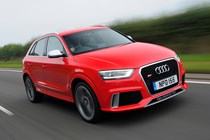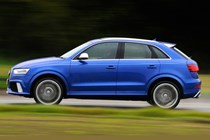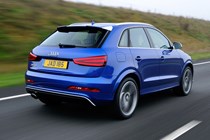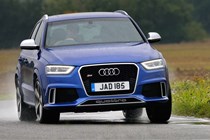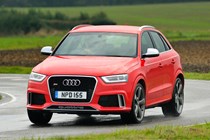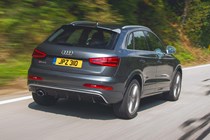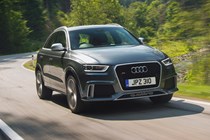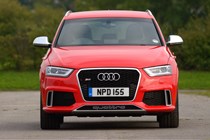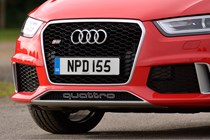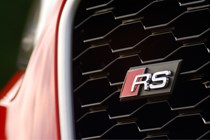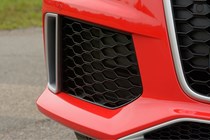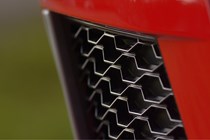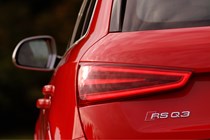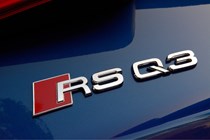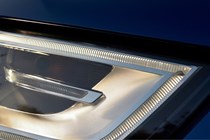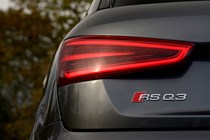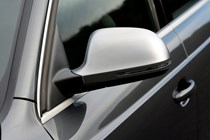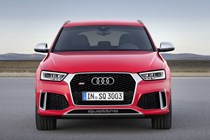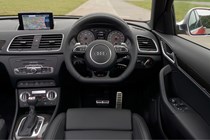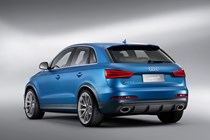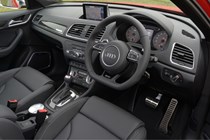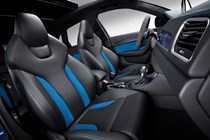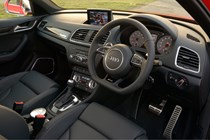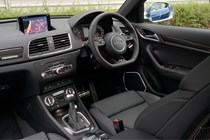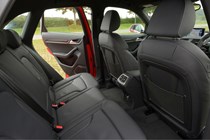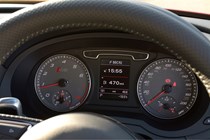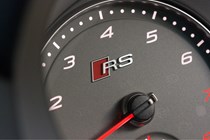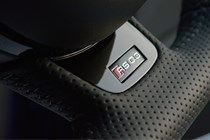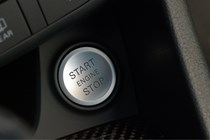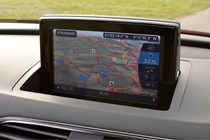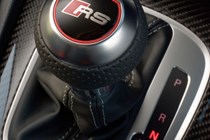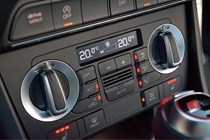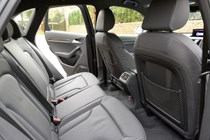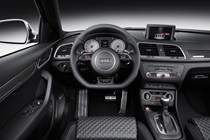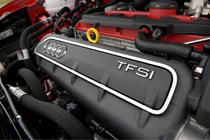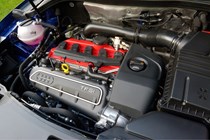Audi Q3 RS (2013-2017) engines, drive and performance

Metering out Audi RS Q3 performance is a five-cylinder, 2.5-liter turbocharged petrol engine. It makes 306bhp, with 420Nm of torque available between 1,500 and 5,200rpm.
A modified version of the engine found in the TT RS and RS3 Sportback, it’s extremely characterful and has prodigious amounts of power over a vast swathe of its rev range.
Officially Audi claims a 0-62mph time of 5.2 seconds, and on the road it actually feels slightly faster. This is thanks in part to the four-wheel drive system, which lets the car hook right into the tarmac and fire forwards when you bury the throttle. Top speed has been electronically limited to 155mph.
The only thing holding the RS Q3 back is the smooth seven-speed S tronic automatic gearbox. While it’s fine for 95 percent of everyday driving, it can operate a little slowly on occasion. It can be manipulated manually via the paddles behind the steering wheel for ultimate control, but again can be a little tardy on the down-shifts.
Audi’s Drive Select system comes as standard, allowing the driver to select from either Comfort, Auto or Dynamic settings for the throttle response and gear-change speed. We found the majority of driving was done in Comfort for an easy life, but if you find yourself on your favourite B-road then switching to Dynamic will yield a slight uplift in performance.
One thing you can’t fail to notice about the way the RS Q3 drives is the amount of sheer grip available. Thanks to Audi’s Quattro four-wheel drive system there’s very little chance the car will lose traction regardless of the driving conditions.
There isn’t a huge amount of body-roll either, which is surprising considering the car’s off-roader underpinnings. Audi has installed RS-specific sports suspension which means a ride-height drop of 25mm, and this really does help keep the car in check through fast cornering.
The brakes, which are absolutely huge, are fantastic. They’re progressive yet powerful and don’t give up when under hard, repeated use.
Unfortunately, the steering is something that doesn’t stand out so impressively. It lacks any sort of meaningful feedback as to what the front wheels are doing. This means you lose some of the confidence gained through the four-wheel drive system when driving quickly.
It has the effect of making this car a comfortable one when driving at seven-tenths, but any more than that and things start to become a little hairy. Still, how many of these are going to be driven flat-out much of the time? We’d suspect not many.


